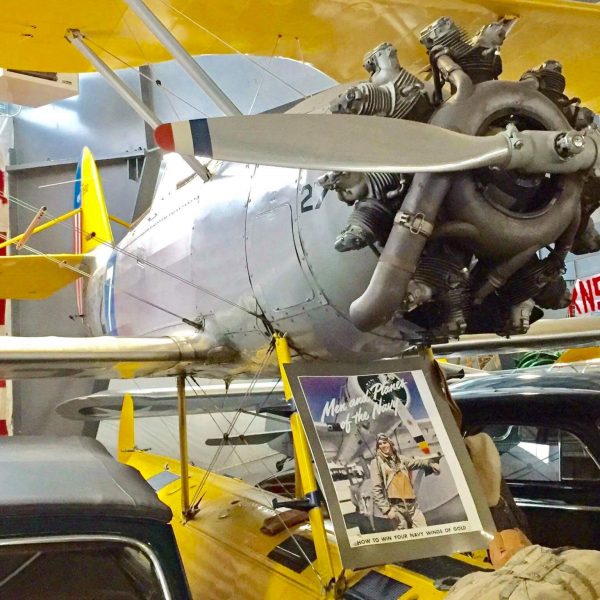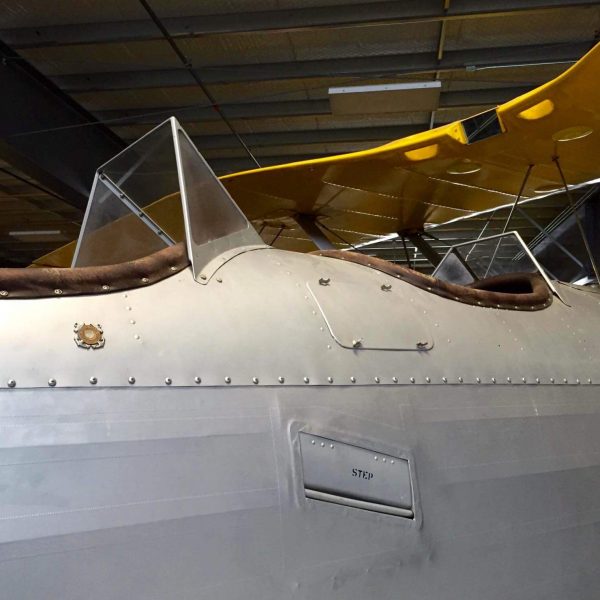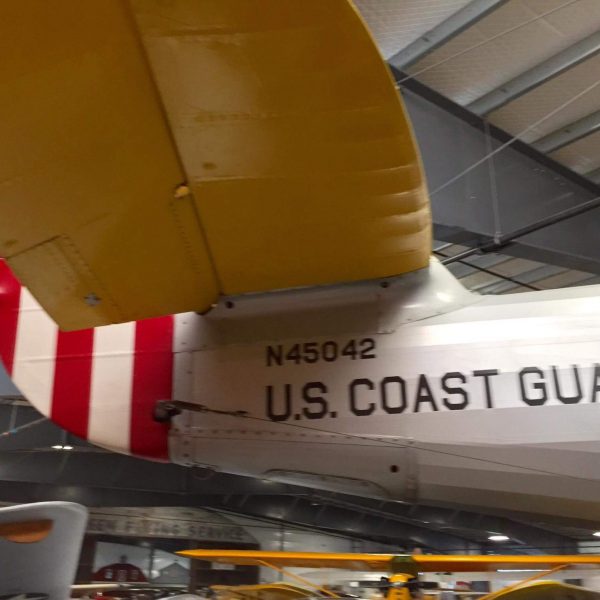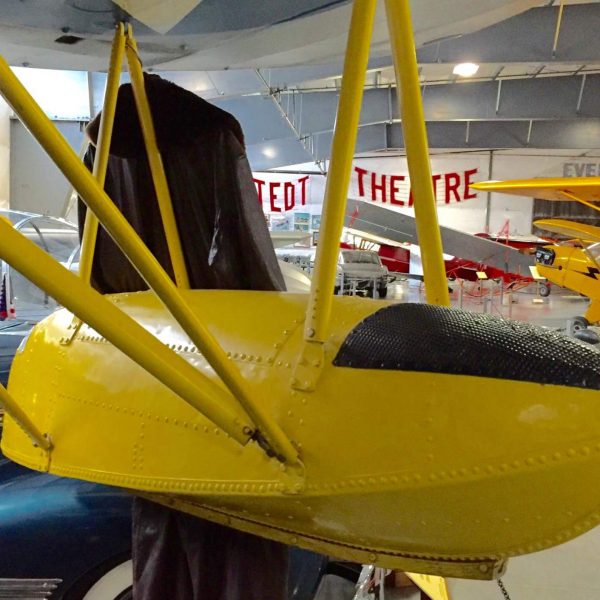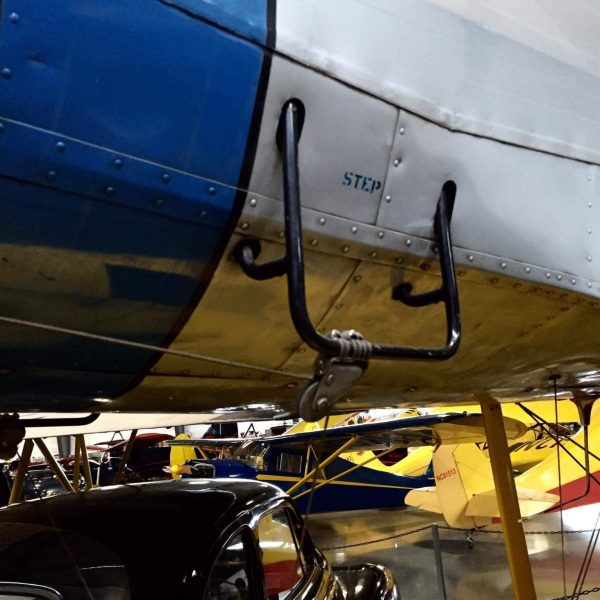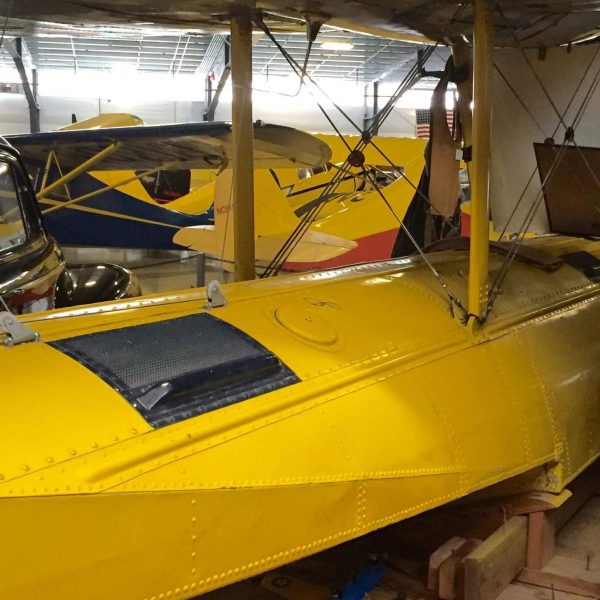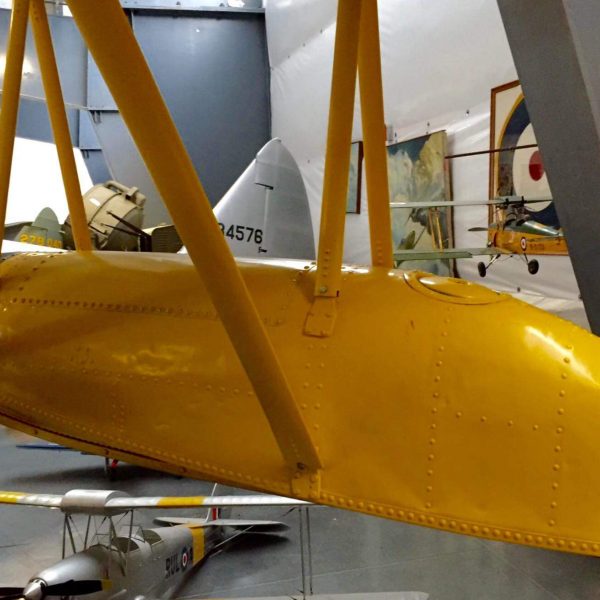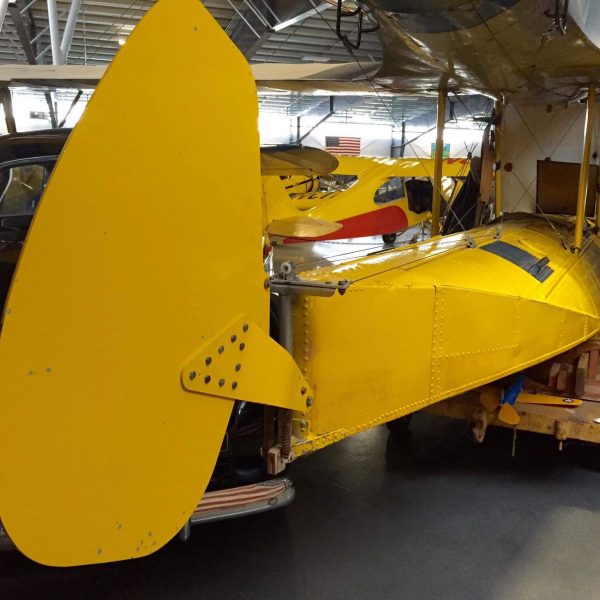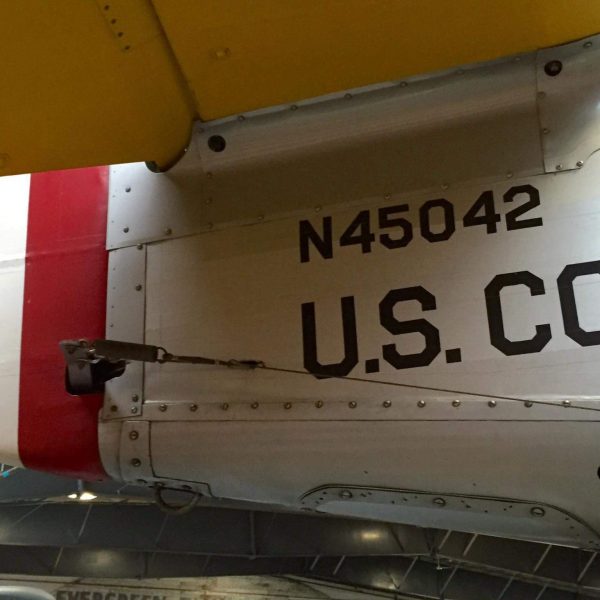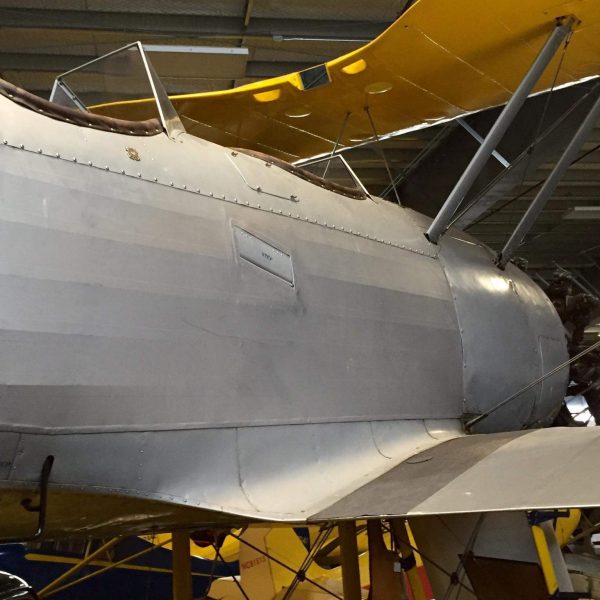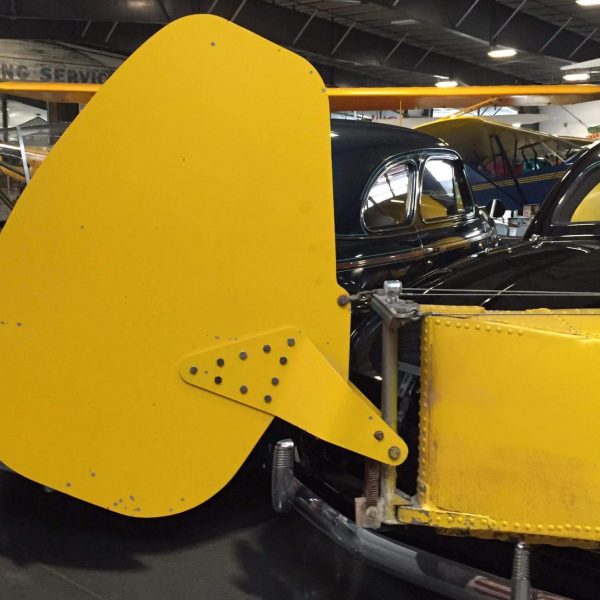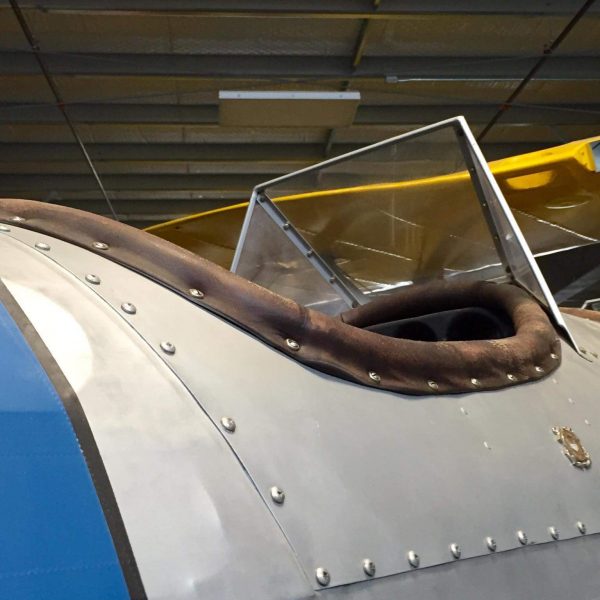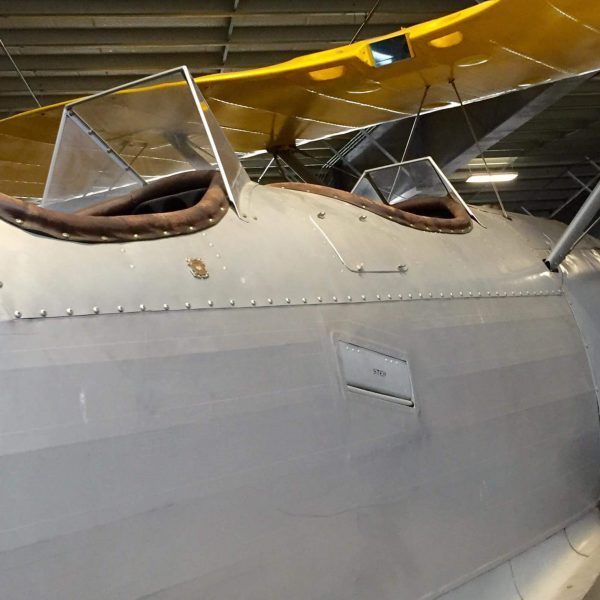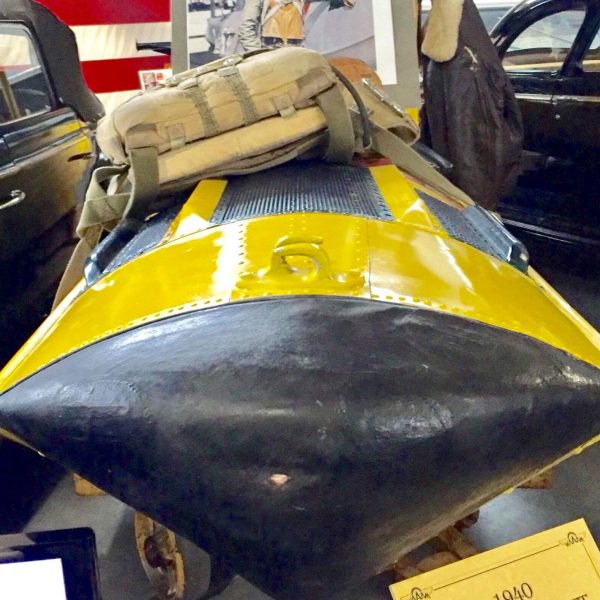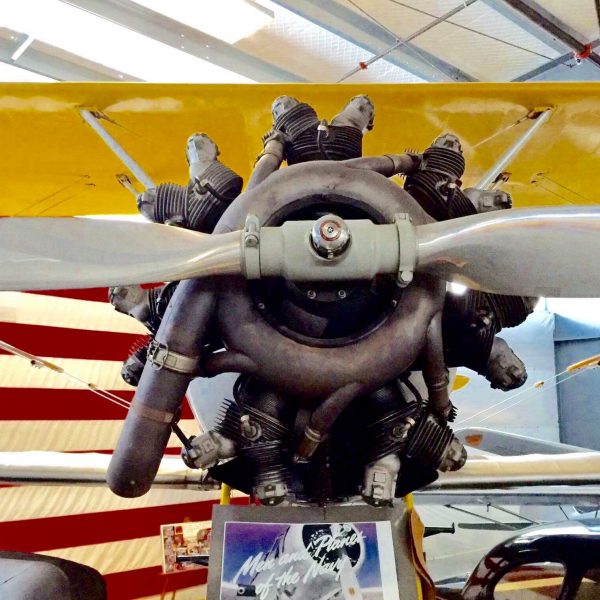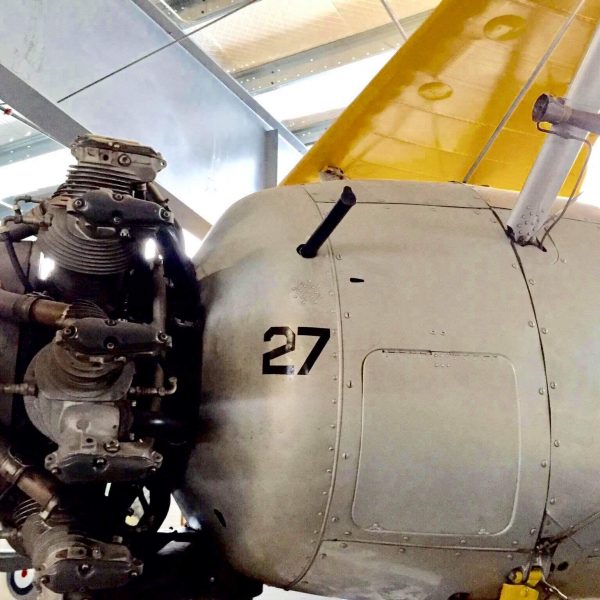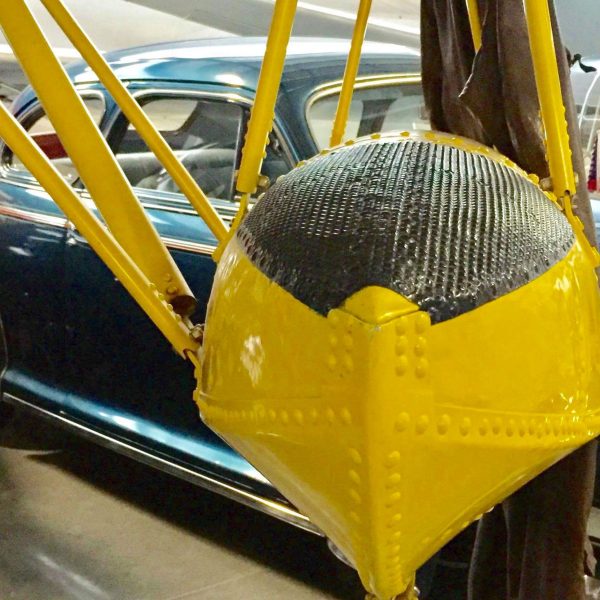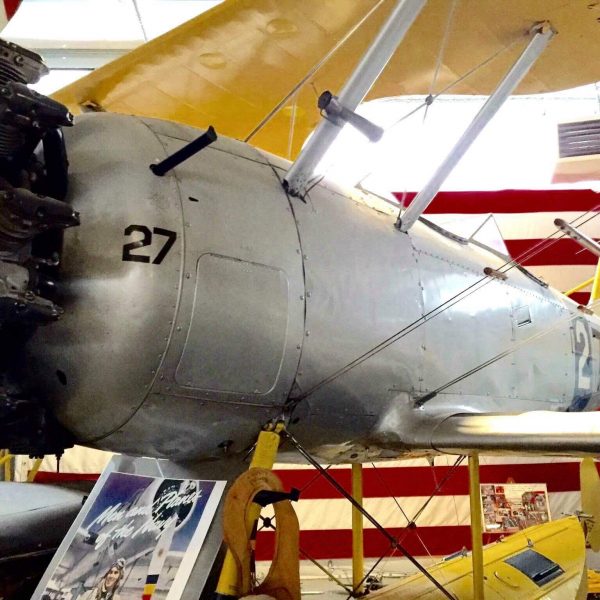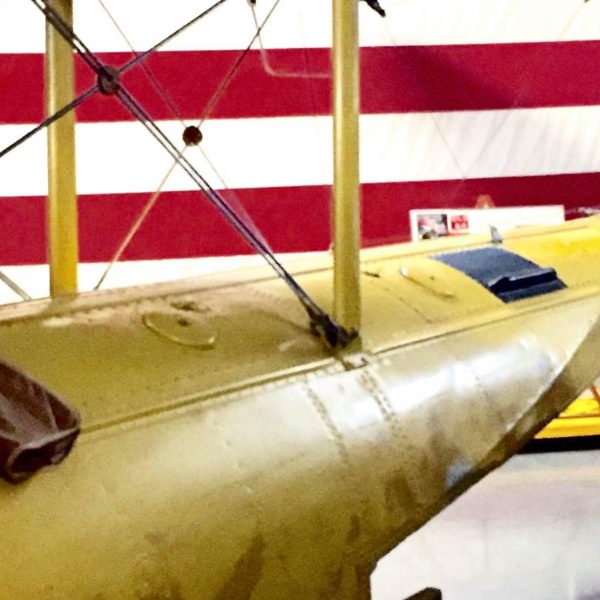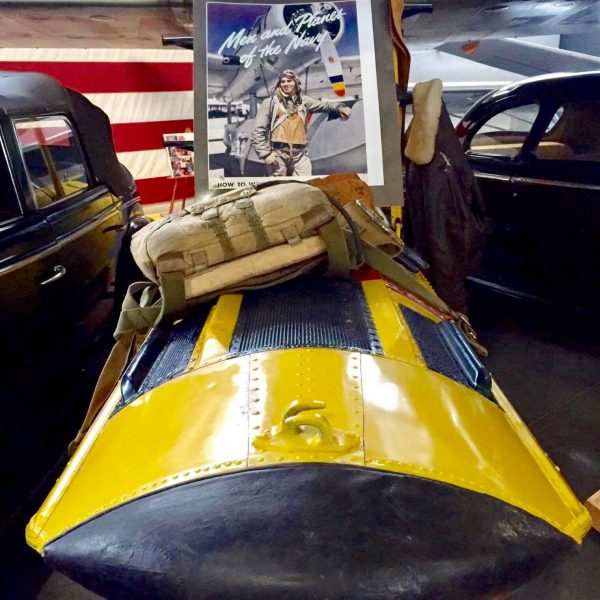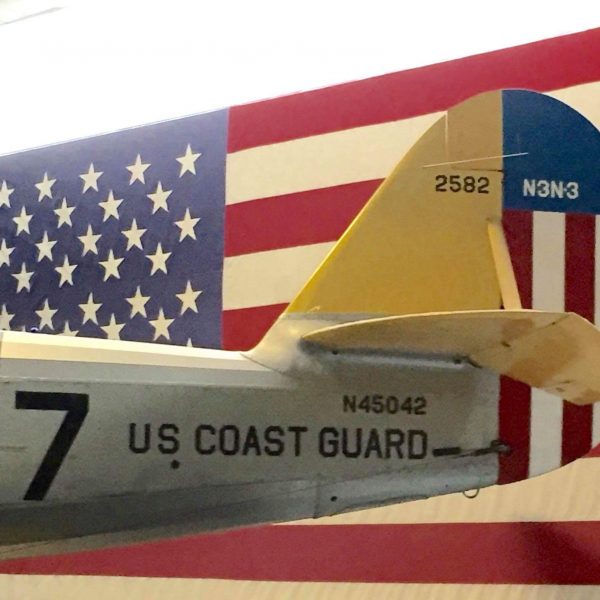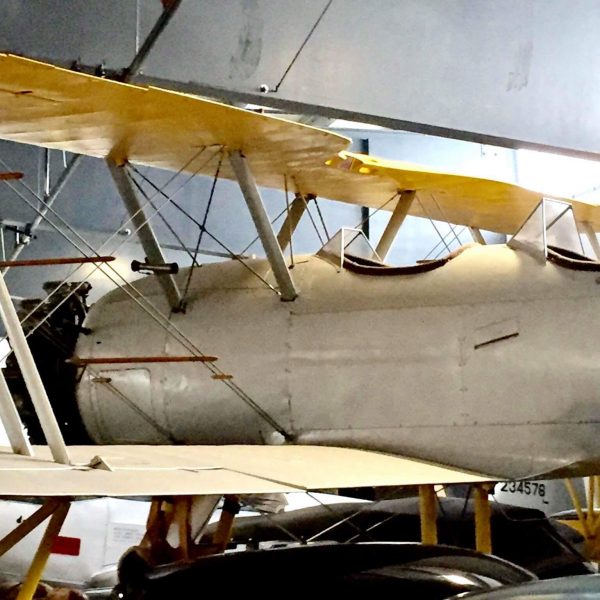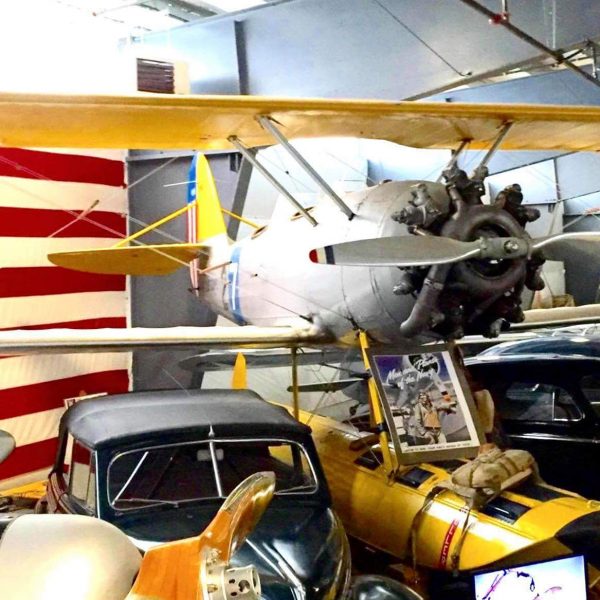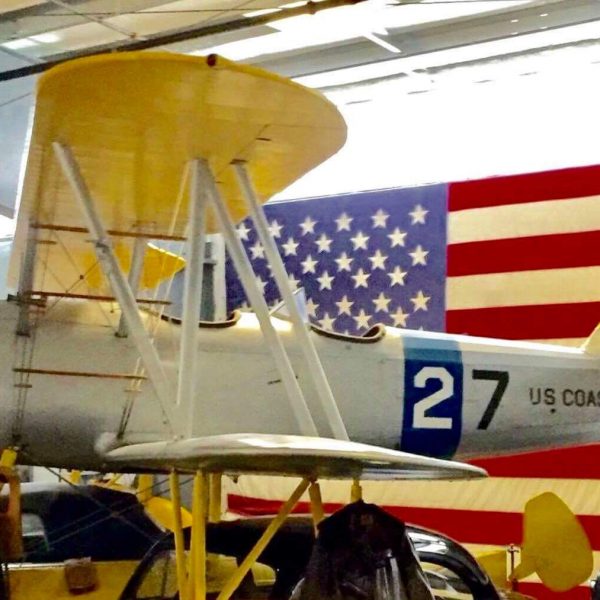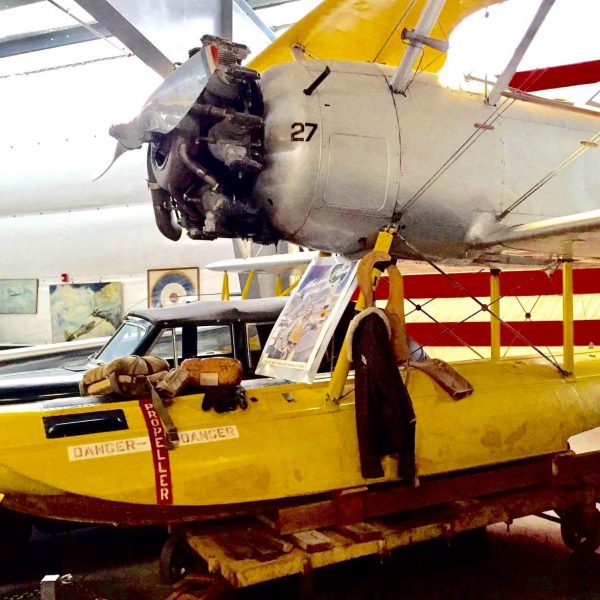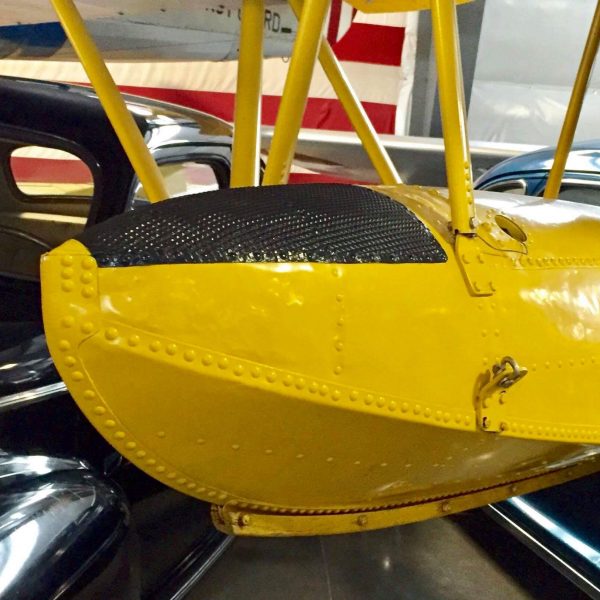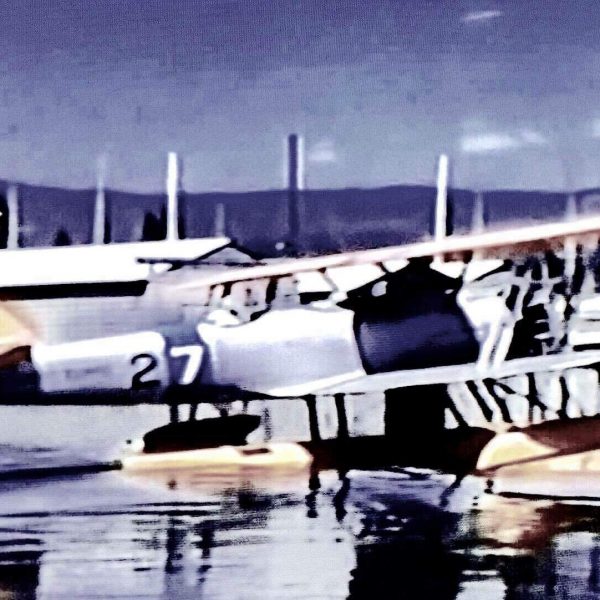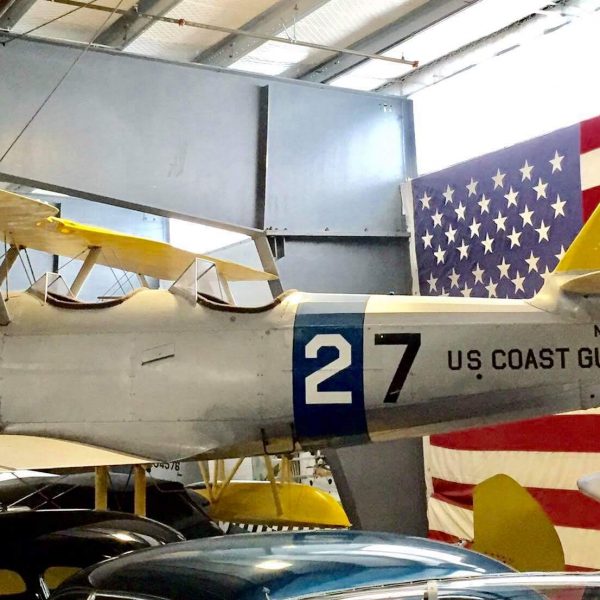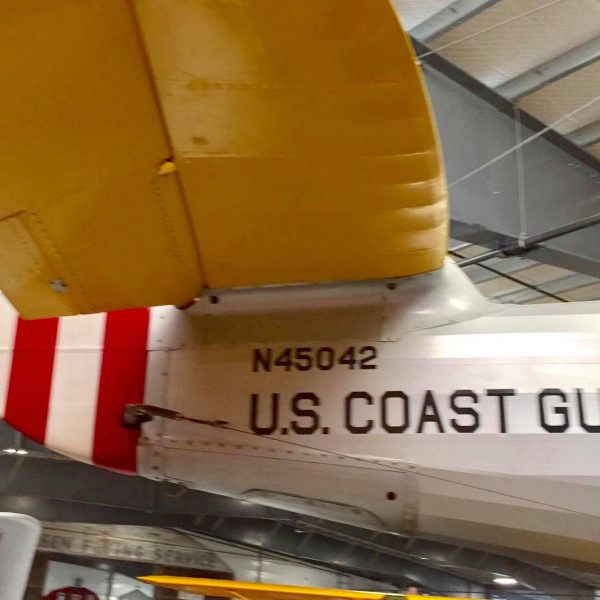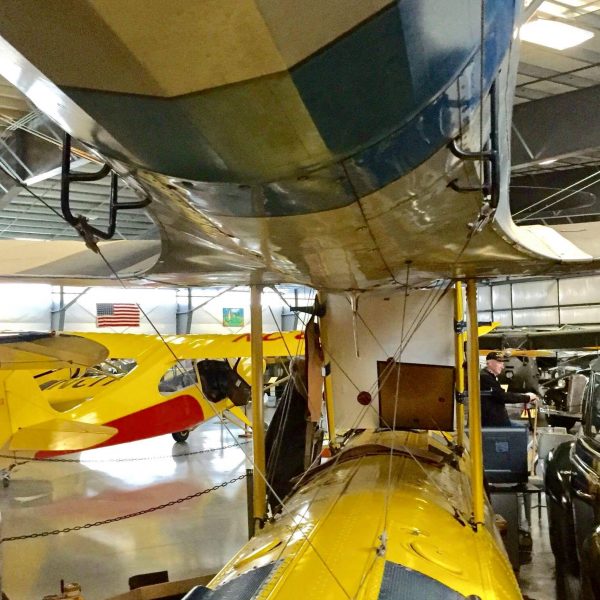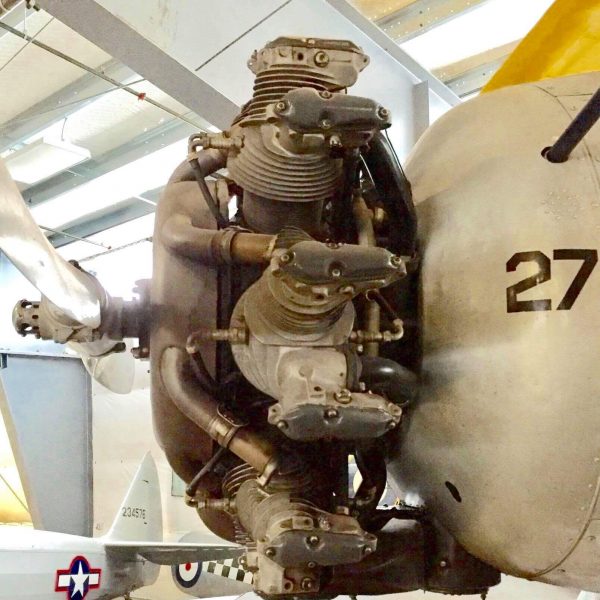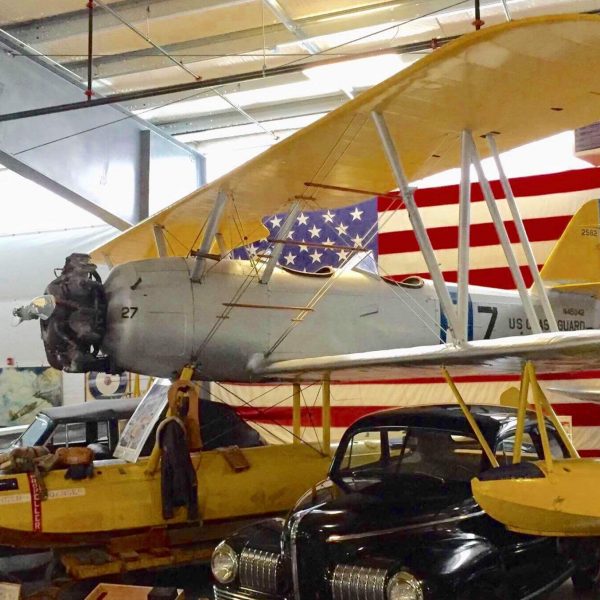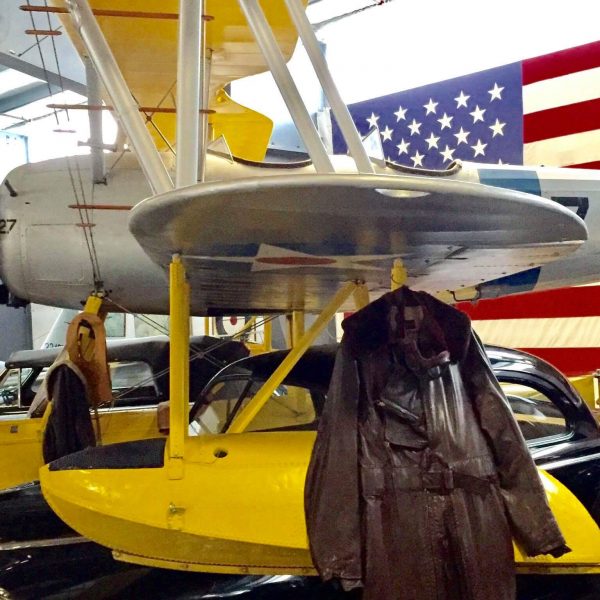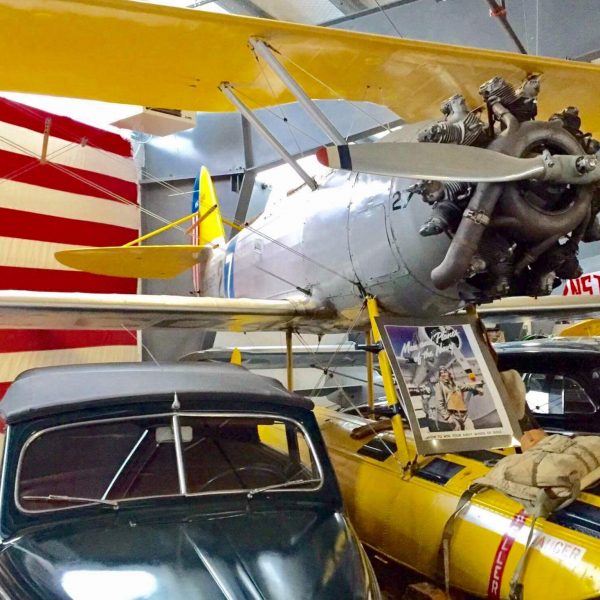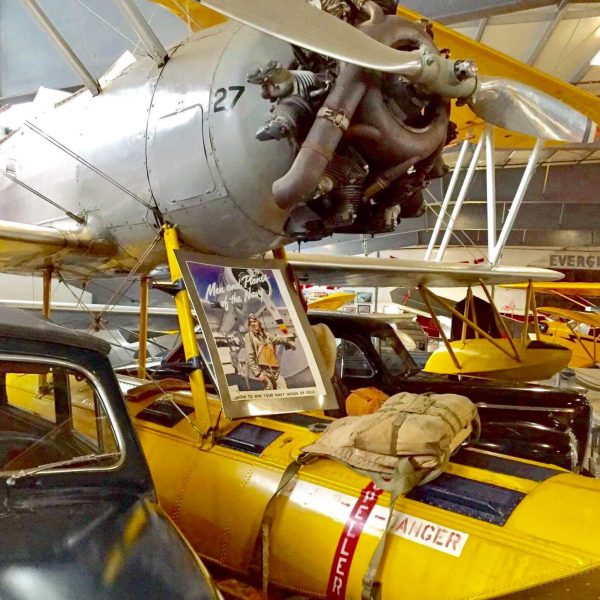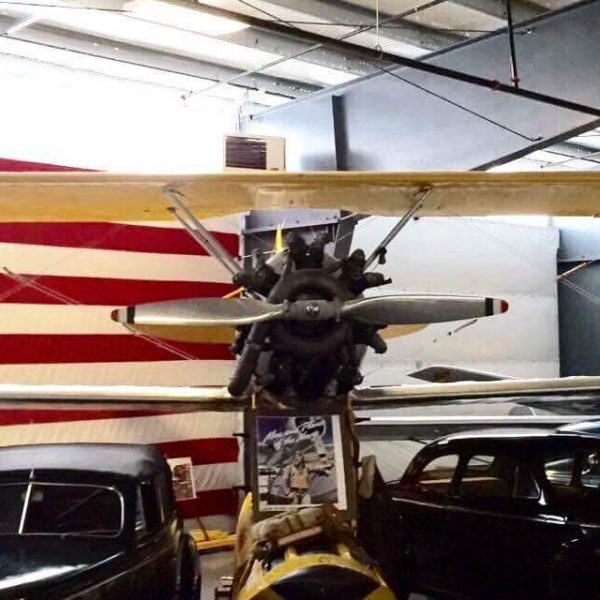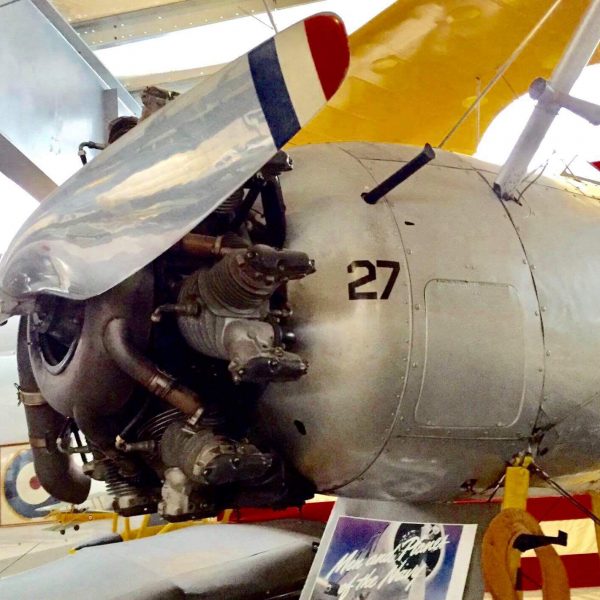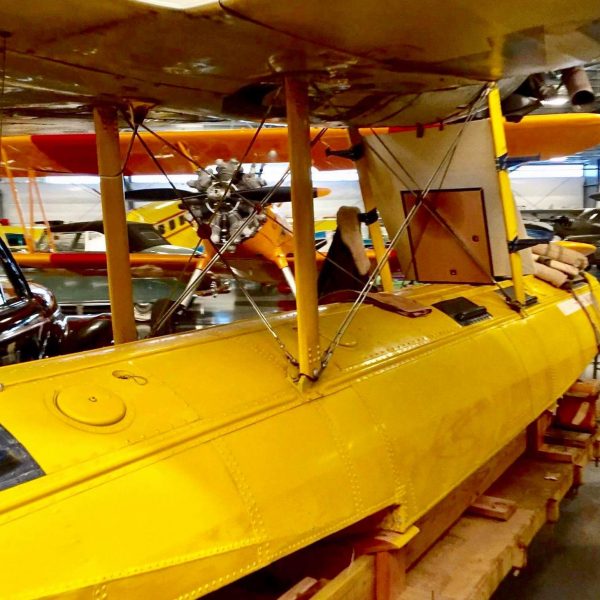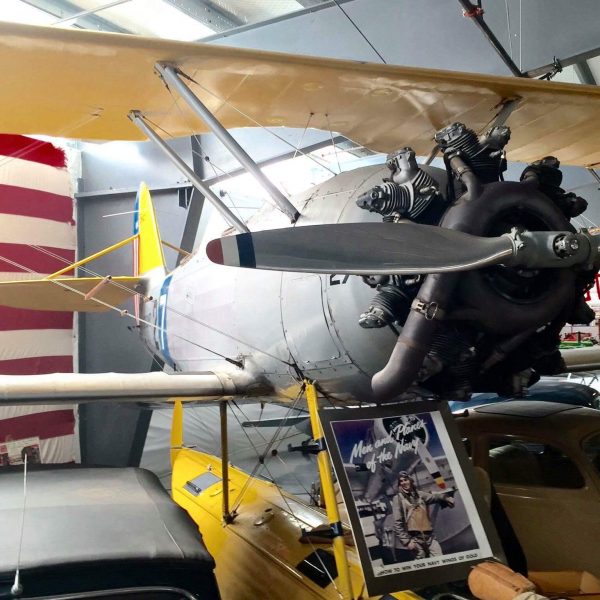Naval Aircraft Factory N3N-3 Canary (“Yellow Peril”)
A tandem-seat primary trainer, the N3N was the last biplane in U.S. military service as it was retired in 1961. The aircraft were known as the “Yellow Peril” – lore says it was either due to its tendency to ground loop (and taxiing required a series of s-turns due to the limited forward visibility), or simply the fact that pilots found training harrowing (and if the cadet failed to solo in the prescribed time, was in peril of not becoming an aviator). The U.S. Navy primary trainers were painted Chrome Yellow for maximum visibility, whereas the U.S. Army painted their primary trainer fuselages blue and the wings and tail surfaces Chrome Yellow, and the U.S. Coast Guard painted their aircraft in gray or blue-gray. Built by Naval Aircraft Factory (established in 1918 in Philadelphia), the Canary is one of a small number of aircraft designed and built by a factory federally-funded for the U.S. Navy (there was resulting controversy in that it was considered in direct competition with the civilian industry and part of the reason the project was disestablished and production ceased in 1945). In the 1930’s the U.S. Navy needed a more sophisticated trainer and had leftover aluminum angle from the building of the airships USS Akron and USS Macon. The result was the N3N, which first flew in 1935, and was delivered to the U.S. Navy, the U.S. Marine Corps and a few to the U.S. Naval Academy. The U.S. Coast Guard acquired four from the U.S. Navy in December 1940 by trading four Grumman JF-2 Ducks, and at least one of the Canary’s was stationed at USCG Station St. Petersburg and another at USCG Floyd Bennett, New York. It was fitted as both a ground-based aircraft and as a seaplane with floats. It featured an all-metal frame construction. The nose up to the firewall and the tail fin were metal covered, while the rest of the aircraft was covered in Grade A cotton as was common for the time (restorations typically use Dacron). The port side of the fuselage was built with five access panels for inspection and maintenance. Powered by a Wright R-760-2 Whirlwind radial engine with a hand-crank that turned the inertia flywheel until sufficient momentum was built and the T-handle starter was pulled. Communication from instructor in the front seat to cadet in the aft seat was through a speaking tube (cones connected by an air pipe). After World War II, surplus N3N’s could be purchased for about $500, and were in some cases converted to sprayers or crop dusters.

